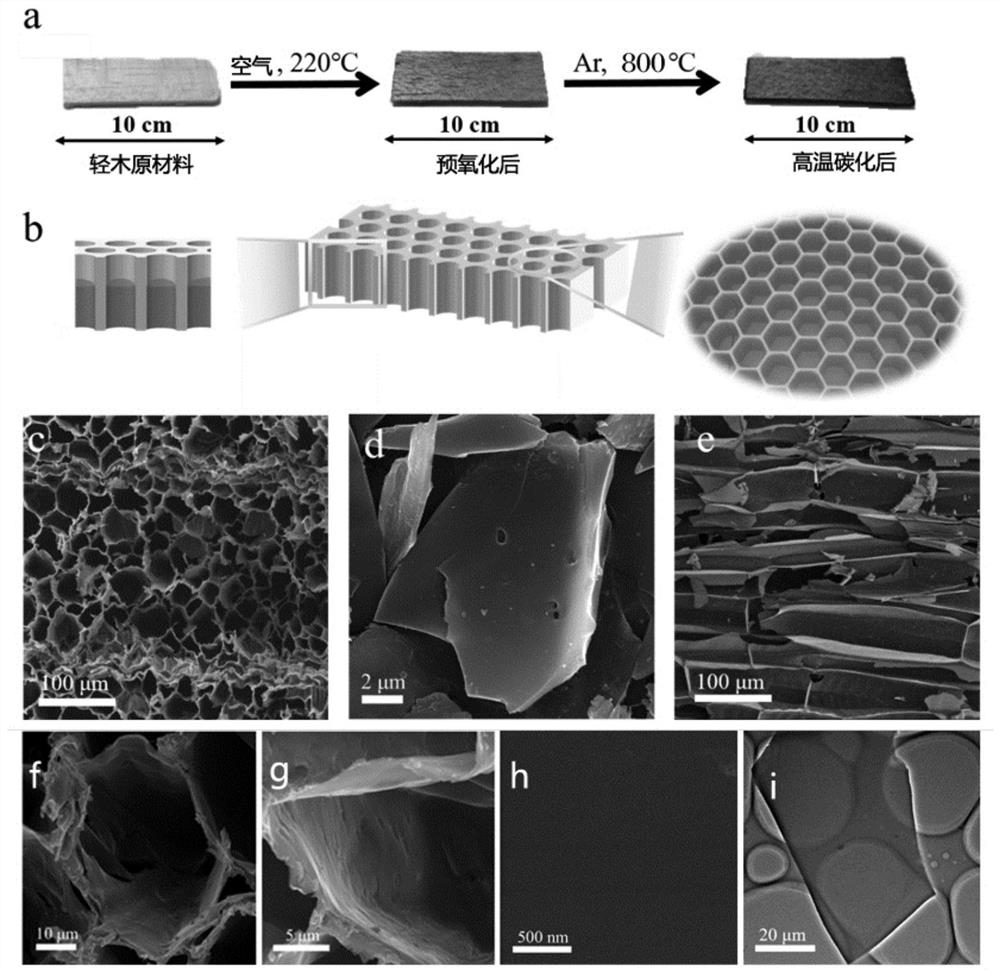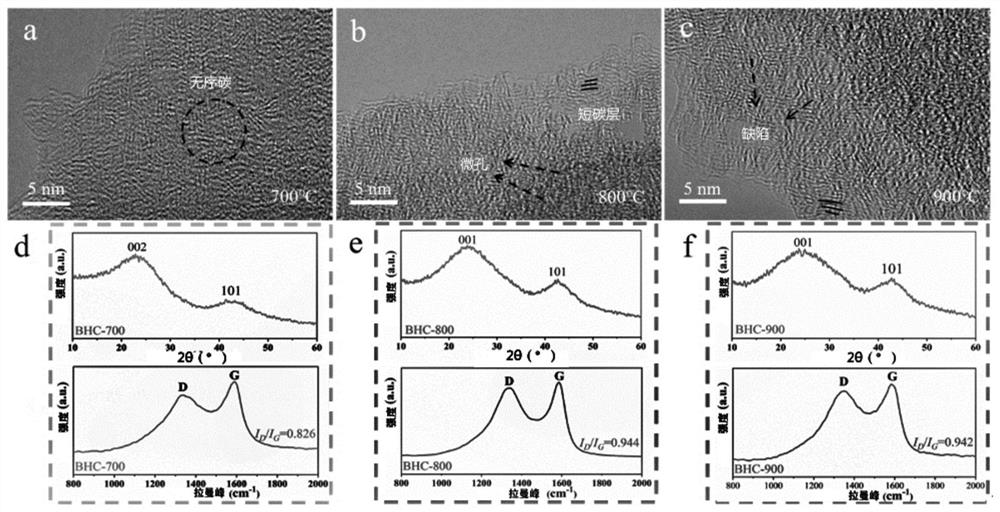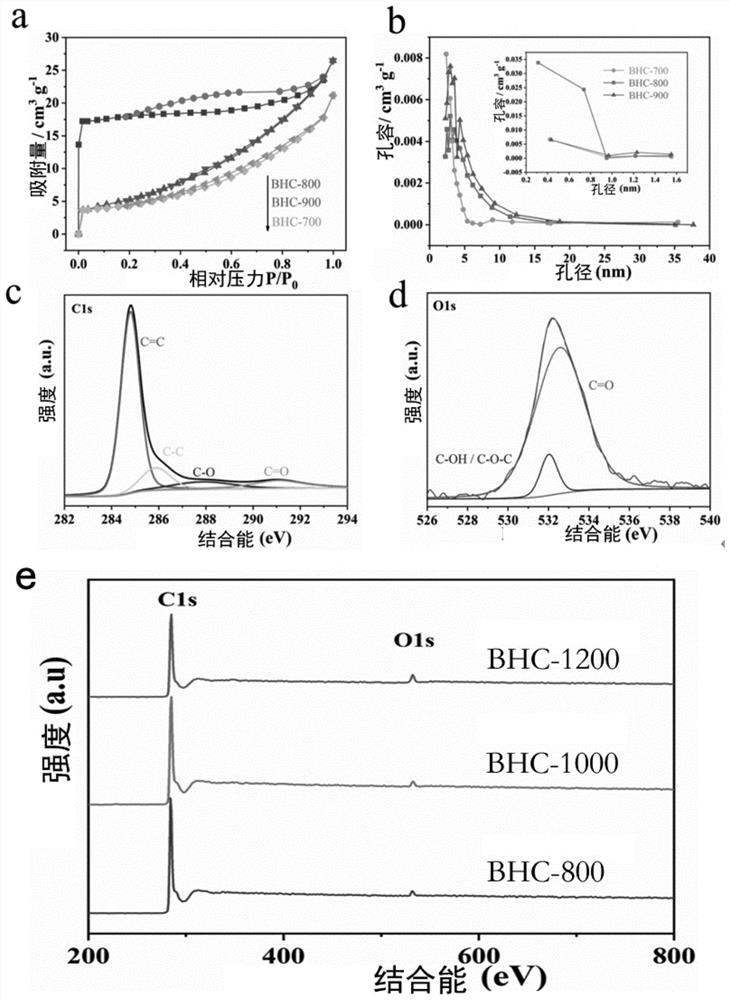Balsa wood-derived binder-free self-standing carbon foam negative electrode material and preparation method thereof
A negative electrode material, binder-free technology, applied in the field of binder-free self-supporting carbon foam negative electrode material and its preparation, can solve the problems of unfavorable electrolyte infiltration, small contact area, electrode crushing, etc., and achieve enhanced electron transfer , Improve energy density, improve wettability effect
- Summary
- Abstract
- Description
- Claims
- Application Information
AI Technical Summary
Problems solved by technology
Method used
Image
Examples
Embodiment 1
[0035] First, clean and dry the balsa wood precursor: cut the balsa wood into small pieces, put them in a petri dish, and then wash them repeatedly with deionized water; then put the cleaned balsa wood into a petri dish at 70°C to fully dry;
[0036] Secondly, pre-oxidize the balsa wood: put the dried balsa wood into an air atmosphere muffle furnace, -1 Raise the temperature to 220°C at a certain rate, and heat it at this temperature for 30 minutes;
[0037] Finally, high-temperature carbonization treatment: put the pre-oxidized material into a reaction furnace with an argon atmosphere, and heat it at 5°C min -1 The temperature was raised to 800°C at a high temperature, and annealed and carbonized at this high temperature for 2 hours to obtain a binder-free self-standing carbon foam negative electrode material (BHC-800);
Embodiment 2
[0039] The high-temperature carbonization temperature of embodiment 2 is 700 ℃, and others are consistent with embodiment 1, obtain non-binder free-standing carbon foam negative electrode material (BHC-700);
Embodiment 3
[0041] The high-temperature carbonization temperature of embodiment 3 is 900 ℃, and others are all consistent with embodiment 1, obtain non-binder free-standing carbon foam negative electrode material (BHC-900);
PUM
| Property | Measurement | Unit |
|---|---|---|
| Diameter | aaaaa | aaaaa |
| Diameter | aaaaa | aaaaa |
| Diameter | aaaaa | aaaaa |
Abstract
Description
Claims
Application Information
 Login to View More
Login to View More - R&D
- Intellectual Property
- Life Sciences
- Materials
- Tech Scout
- Unparalleled Data Quality
- Higher Quality Content
- 60% Fewer Hallucinations
Browse by: Latest US Patents, China's latest patents, Technical Efficacy Thesaurus, Application Domain, Technology Topic, Popular Technical Reports.
© 2025 PatSnap. All rights reserved.Legal|Privacy policy|Modern Slavery Act Transparency Statement|Sitemap|About US| Contact US: help@patsnap.com



